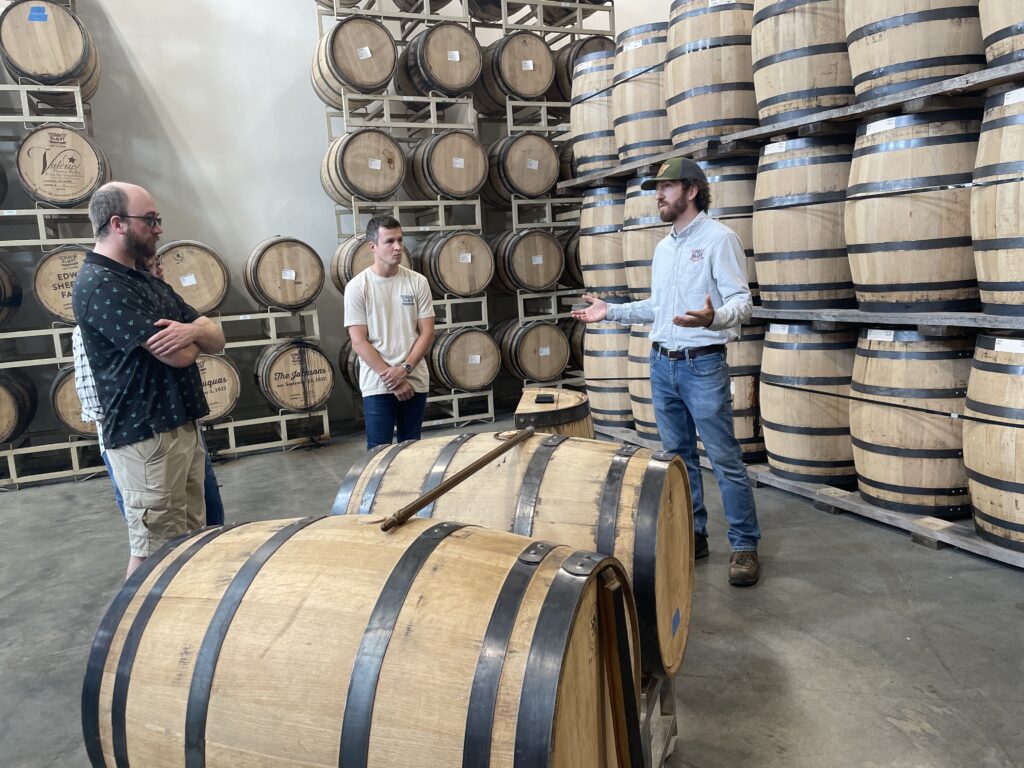
Whiskey Barrels vs. Whisky Casks – What’s the Difference?
When diving into the world of aged spirits, you may come across two seemingly similar terms: whiskey barrels and whisky casks. While they may sound alike, these terms hold distinct meanings and carry nuances that matter to both producers and enthusiasts. This article unpacks the key differences between whiskey barrels and whisky casks, exploring how they influence the flavor, style, and overall character of the spirit.
1. Whiskey vs. Whisky: A Quick Primer
Before dissecting barrels and casks, let’s clarify the difference between whiskey and whisky. Generally, the spelling “whiskey” is used in Ireland and the United States, while “whisky” is the preferred spelling in Scotland, Canada, and Japan. This spelling distinction reflects regional preferences and traditions, often signaling unique approaches in production.
2. Barrels and Casks: What’s the Difference?
The terms “barrel” and “cask” are often used interchangeably, but in the industry, they denote different aspects related to spirit aging:
- Barrels are a specific type of cask with standardized sizes, shapes, and aging purposes.
- Casks is a broader term that includes barrels, but also encompasses other aging vessels like butts, hogsheads, puncheons, and quarter casks, each with distinct sizes and attributes. This broader variety allows distillers and blenders to create unique flavor profiles.
In short, all barrels are casks, but not all casks are barrels.
3. The Size Factor
One of the primary distinctions between barrels and casks is size, and this size difference has a notable impact on the aging process.
- Standard Barrels typically hold around 53 gallons (200 liters) in the U.S. and 40 gallons (160 liters) in Scotland. This smaller volume allows for greater interaction between the spirit and the wood, resulting in faster aging and more pronounced wood influence. American whiskey, particularly bourbon, often ages in these standard-sized barrels.
- Casks range widely in size:
- Hogsheads (around 250 liters) are larger than standard barrels and often used in Scotch whisky production.
- Butts (around 500 liters) are frequently used to age sherry and whisky, leading to a more mellow wood interaction over a prolonged period.
- Quarter Casks (around 50 liters) are smaller, allowing for more intense wood-to-liquid contact, often used for a quicker, richer aging process.
These size variations give distillers greater control over how the spirit interacts with the wood, which directly influences flavor development.
4. Wood Type and Char Levels
The type of wood and the level of char or toast inside the barrel or cask also varies between whiskey and whisky traditions.
- American Whiskey Barrels are typically made from American oak, which imparts sweet, vanilla, and caramel flavors. Before aging, these barrels are charred, creating a charcoal layer that filters and adds complexity to the spirit. Bourbon, for example, must be aged in new, charred American oak barrels by law, which is why bourbon has a rich, robust flavor profile.
- Whisky Casks in Scotland and other regions may be made from American or European oak. Many Scotch distilleries use previously used barrels, such as those previously aging bourbon or sherry. This practice imparts additional, nuanced flavors like dried fruit, spice, or nuttiness, contributing to Scotch whisky’s layered profile. The casks are often lightly toasted or left uncharred, leading to a subtler influence from the wood.
5. Influence on Flavor
The choice between using a barrel or another type of cask is an intentional decision that impacts flavor.
- Barrels provide a more intense and faster infusion of wood character, making them ideal for whiskeys like bourbon that are known for bold, rich flavors.
- Larger Casks like hogsheads and butts, on the other hand, promote a slower maturation process, allowing for more delicate, refined flavor profiles. The spirit can develop complex flavors with subtle hints of the previous liquid, such as sherry or wine, used in the cask.
For example, a Scotch whisky aged in an ex-bourbon hogshead may carry soft notes of vanilla and toffee, while one aged in a sherry butt will be more likely to develop rich, fruity notes.
6. Aging Process and Regional Traditions
In the United States, bourbon and other American whiskeys are generally aged in standard 53-gallon barrels. American distillers often prioritize shorter aging times due to warmer climates, which speed up the maturation process. By contrast, the cooler climate in Scotland allows for slower aging, and the use of larger casks accommodates this extended process, allowing Scotch whisky to develop nuanced flavors over decades.
7. Reusing Casks
In the U.S., bourbon barrels are used only once by law. After their first use, many of these barrels are exported to Scotland, where they continue to age Scotch whisky. By contrast, Scotch whisky casks are typically used multiple times, with each refill imparting slightly less intense wood character, leading to more subtle, complex flavors over time.
In Summary
While whiskey barrels and whisky casks may serve a similar purpose, their distinctions in size, wood type, aging process, and regional preferences result in unique flavor profiles and traditions. Whiskey barrels, especially in American whiskey production, focus on intense wood interaction and bold flavors. Whisky casks, particularly in Scotch production, embrace a broader range of vessel types and sizes, leading to a more layered, nuanced approach to maturation.
Whether you prefer the caramel-forward profile of bourbon or the intricate depth of a well-aged Scotch, understanding the nuances of barrels and casks can deepen your appreciation for the art of aged spirits. The next time you pour a dram, you’ll know that it’s not just what’s inside the glass that matters—it’s the journey the spirit took in the barrel or cask that shaped it into the whiskey or whisky you savor.